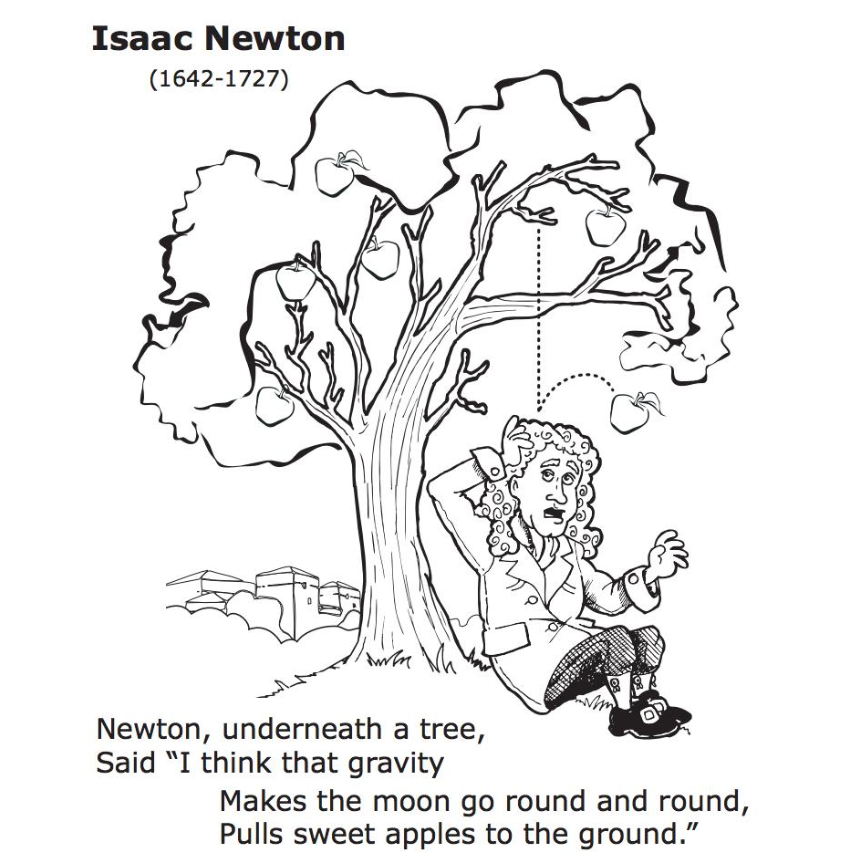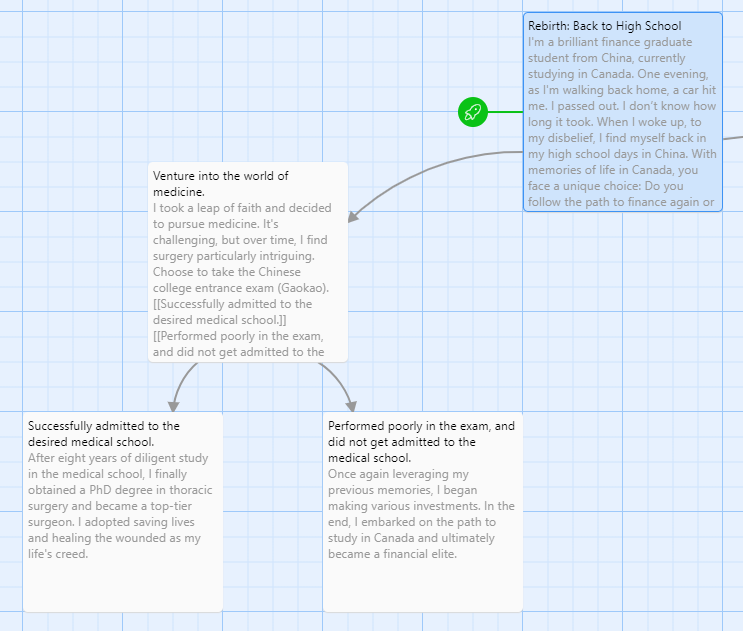Sir Isaac Newton and the Falling Apple

Sir Isaac Newton and the Falling Apple is one of the most famous stories in physics study, which brought me a meaningful learning experience. This well-known narrative tells how Newton was sitting under an apple tree, and an apple fell on his head, leading him to question why it fell straight down and not in any other direction. This simple observation and subsequent contemplation supposedly led him to formulate the laws of motion and the universal law of gravitation, Particularly, the story helped me to keep the First Law in mind, which tells people an object will remain at rest or in uniform motion in a straight line unless acted upon by an external force.
What made this story so impactful for me was its simplicity and the profound discovery. It showcased that great scientific revelations don’t necessarily come from complex experiments but can stem from normal observations if approached with a curious mind.
The story appealed to my visual sense, as I could easily picture the scene of Newton sitting under the apple tree. The tactile sensation of an apple hitting his head also made the story more vivid.
Looking back to the storytelling techniques reviewed this week, the Newton story clearly utilizes the power of visualization, with elements like the apple tree and the falling apple. It also taps into emotions – the surprise of the apple’s sudden drop. Finally, the story use ‘End with a positive takeaway’ techniques embodies the idea that monumental insights can be born from simple, everyday experiences, making the learning memorable and inspiring. The fact that such a transformative concept gravity was understood from such a basic observation, giving hope to learners like myself, that we may one day stumble upon our own apple.
7 Storytelling Techniques

In my video, I introduced my research experience on 3D Time Series Visualization on 2D Map. I have instinctively used ‘Immerse your audience in the story’, ‘Tell a personal story’, and ‘Show Don’t tell.’ storytelling techniques. I did this at the beginning of the research project story, introducing the background and drawing the audience into the narrative. I started by telling my audience why I wanted to do the research project and how I gained the research opportunity. This means creating an environment where listeners can visualize and feel the story as though they’re experiencing it firsthand. I used rich descriptive language and sensory details to paint a vivid picture of the day I was offered the research assistant position, allowing the audience to step into my story. By speaking from the heart to share my real-life example, I used emotions and reflections to connect on a personal level with the audience. Furthermore, I showed the audience my research results rather than just telling them. I showed the 3D time series cylinder moving on the 2D BC map, which shows the COVID-19 cases spread situation in BC, making my narratives more vivid and memorable.
However, I need to work more on creating suspense and building up to a S.T.A.R. moment. I should involve crafting my narrative in a way that keeps my audience eager to know what happens next, building tension and anticipation. For example, I should not tell my audience if the research sucessed or failed.In the future, I won’t reveal everything at once.I will give bits of information gradually to keep the audience curious. I should also create the “Something They’ll Always Remember” moment, leaving a lasting impression in my narrative.
All 7 Storytelling Techniques are crucial, once we successfully apply these techniques, we will be enhancing the depth and engagement of our stories, creating memorable narratives that resonate with our audience.
Creating Story by Using Twine
This is a science fiction story, telling a brilliant financial math graduate student from Canada who finds himself inexplicably transported back to his high school days in China. Presented with a rare second chance, he grapples with decisions that could redefine his destiny. Will he tread the familiar path or take an entirely different turn?




Thank you very much for your reflection about storytelling! I really like your explanation with the example of Newton and the Falling Apple, I was amazed by how you organized your thoughts and ideas developed from this example and the depth of your thoughts. They really show that you have a clear and detailed understanding of the guidlines about storytelling! When it comes to creating our own stories, I had same struggle of building a star moment in my plot and I think this is also what I need to be focuing on in future story creation. Well done!